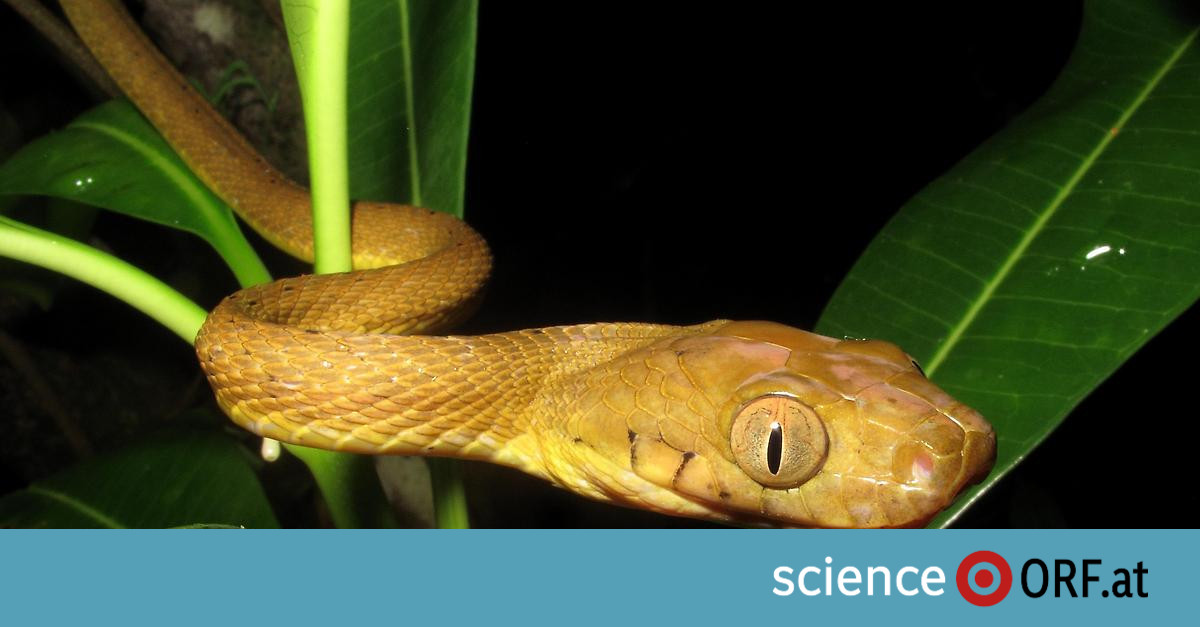More than 100 million years ago, there were smaller lizards alongside dinosaurs. Some of these species changed over millions of years: they developed limbless bodies that could glide across the ground, developed precise systems for detecting and tracking prey, and acquired flexible skulls to swallow larger animals.
On the one hand, these changes ensured the survival of these animals, and on the other hand, new species evolved. When an asteroid hit Earth 66 million years ago, three-quarters of all plant and animal species were wiped out. Reptiles had to find new ways to find food. New species evolved that were better able to adapt to the conditions.
Why and how the thousands of snake species still alive today have evolved over time has now been investigated by an international research team led by the University of Michigan.
Snakes evolved faster
Speed is one answer, major anatomical changes are another. This led to Stady, which was published in the journal Science. According to this, snakes evolved three times faster than lizards. The body and head changed such that there were differences in food intake, movement, and processing of sensory stimuli compared to lizards.
“This study is about what makes a winner in evolution. Snakes have evolved more rapidly in some important ways. This has enabled them to exploit new opportunities that other lizards could not,” said the study's author and evolutionary biologist. Daniel Rabosky.
One of the main reasons is that snakes have undergone a profound change in their feeding environment that separates them from other reptiles: “If there is an animal that can be eaten, a snake somewhere has likely evolved the ability to eat it.”
Diversity is also evident today: cobras use poison. Snakes strangle prey. Some snakes hunt scorpions in the sand, others hunt snails and frog eggs in trees. Sea snakes use their tails to search coral reef crevices for fish eggs and eels.
DNA and stomach contents
To clarify the stages of evolution, the largest evolutionary tree of snakes and lizards was created: the research team sequenced the genomes of nearly a thousand species. The feeding habits of snakes and lizards have been observed or studied: from live animals and more than 60,000 prepared specimens, and more precisely from their stomach contents. The research team found the specimens in various natural history museums in Europe and the United States of America, where one of the largest research collections of snakes in the world is located. University of Michigan Museum of Zoology.
A huge amount of data is entered into mathematical and statistical computer models. The evolution of (except for) snakes and lizards over geological timescales has been analyzed: for example, why some species lost their limbs. This approach showed that other reptiles also evolved snake-like features. 25 different groups of lizards have also lost limbs. But only snakes have undergone further developments.
However, why snakes actually became so specialized remains unresolved at present. Several factors may have contributed to this. According to the research team, we may never be able to fully know which ones.

“Social media evangelist. Baconaholic. Devoted reader. Twitter scholar. Avid coffee trailblazer.”








More Stories
Longest jets in the universe discovered – giant particle streams as long as 140 Milky Way galaxies in a row
New method reveals 307 supernova remnants
Snapchat is upping the ante on augmented reality glasses